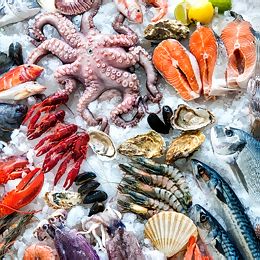
The recent announcement of a $115 million ABL financing agreement by Santander Bank, N.A. for The Fishing Company was likely the largest asset-based revolving credit facility to a fish and seafood processor. Traditionally, asset-based lenders have found fish and seafood processors, importers and distributors to represent an attractive industry for senior secured revolving credit facilities. Secured lending in the seafood industry in the United States is commodity lending due to a number of factors, including:
- Market price volatility for fresh and frozen seafood products;
- Domestic and international sources of supply;
- The wide range of seafood species and origins;
- Shelf life issues for quality and marketability;
- Large speculative purchases made due to seasonality and anticipative market demand;
- Branded value-added product versus commonly traded product and private label finished goods; and
- FDA inspection holds.
Companies in the seafood preparation industry are involved in canning, smoking, salting, drying, breading, freezing and packaging fish and shellfish. Prepared frozen fish represents the largest product category in the industry, accounting for 32.6% of annual industry revenue, according to the research firm IBISWorld, Inc. Prepared fresh fish and other seafood represent 21.2% of annual revenue, while prepared frozen shellfish accounts for 19.7%.
Despite the growing popularity of several varieties of finfish and shellfish, consumption of seafood declined at an annualized rate of 1.6% over the last five years to 2015. Major episodes of seawater contamination, including the Deepwater Horizon oil spill in the Gulf of Mexico in 2010 and the meltdown of Japan’s Fukushima Daiichi nuclear power plant in 2011, contributed to the overall drop in seafood consumption.
Important Collateral Monitoring Points
As fish and seafood products are volatile commodities, the secured lender should recognize the need for enhanced collateral monitoring. The recommended key collateral monitoring points of fish and seafood products are as follows:
- Acquisition costs and selling prices: An increase in inventory acquisition costs without a corresponding increase in selling prices would decrease the company’s gross margins and negatively impact recovery values in liquidations.
- Weeks of supply (WOS): An increase in WOS would necessitate higher discounts in order to sell through the inventory in a timely manner.
- Customer relationships: Loss of a major customer(s) would have a negative impact on sales and result in fewer potential distribution channels in a liquidation.
- Inventory composition: An increase in lower recovering inventory segments such as aged inventory, as a percent of available inventory, would have a negative impact on recovery values.
- Oceanic conditions and health-related seafood news: An outbreak of illness related to seafood could decrease a company’s sales. For example, in March 2016, an Urner Barry seafood report noted that an algae-toxic red bloom crisis caused a loss of $24 million, or roughly 90,000 tons, of Chilean farm-raised salmon.
- Audit and test count inventory: Audits and tests counts of inventory at third party cold storage warehouses should be performed and accounts payable should be confirmed as current.
Reasons for Optimism in the Seafood Sector
In spite of the recent decline mentioned earlier, there is optimism for increased consumption of seafood for health and dietary reasons. Nutritionists and dieticians encourage healthy diets to include foods with Omega-3 fatty acids. This group of polyunsaturated fats is found in a wide variety of foods, most famously in fish. As recent research has linked consumption of Omega-3 fatty acids with potential cardiovascular prevention and other health benefits, these fatty acids represent a popular topic in nutrition research.
Research shows that fish have an Omega-3 content that is highly dependent on their diet. If the fish consume algae, sea plants and other foods that are rich in Omega-3s, they are able to store a larger amount of Omega-3s in their tissue. Additionally, the level of Omega-3s correlates to the amount of fat present in a fish’s body. As darker-fleshed, oily fish, such as salmon and sardines, typically maintain a higher total fat content than leaner species, these fish tend to have the highest levels of Omega-3 fatty acids.
As consumers become more aware of the health benefits of seafood, overall consumption is expected to increase. The research firm IBISWorld has estimated that revenue for the fish and seafood markets will grow at an average annual rate of 1.3% over the next five years to 2020. Generally, fresh and frozen fish consumption and market prices in the United States trend upward in the beginning of the calendar year due to the seasonal effects of the Lenten season and the Chinese New Year. However, an uptick in demand during other times of the year may occur as health-conscious consumers opt for seafood in place of protein sources with fewer perceived health benefits, such as red meat.
U.S. fish and seafood processors source their imported goods from Southeast Asia (Vietnam, Thailand, Indonesia, and Malaysia), South America (Chile and Ecuador), China, India, and the Northern Atlantic (which is represented by Canada, Iceland and Norway). Imports of frozen, headless shell-on (HLSO) shrimp from the major exporting countries of India, Indonesia, Thailand, Vietnam and Ecuador increase in the late summer and early fall.
Continued on Page 2...